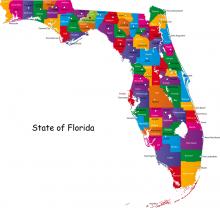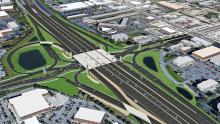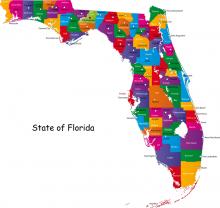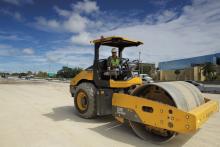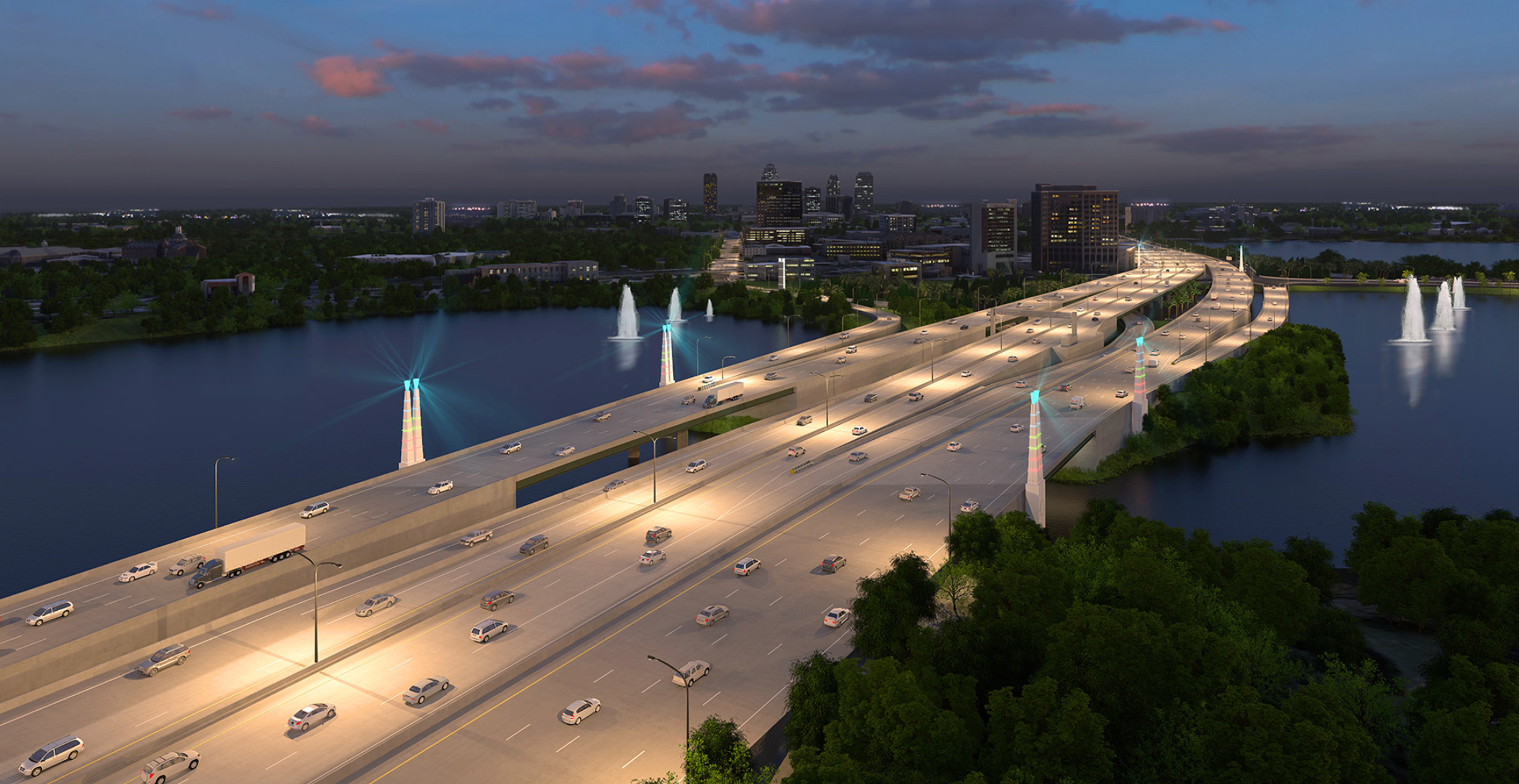
Florida’s 214km-long I-4 highway provides a key transport route between Tampa and Daytona Beach, but has an unenviable reputation for both congestion and safety, with frequent delays due to heavy traffic as well as crashes. The stretch running through the city of Orlando is particularly prone to jams at peak periods, with huge traffic volumes resulting in vehicles having to slow to a crawl. Meanwhile frequent fog on the stretch from SR 33 to US 27 where the I-4 passes through the Green Swamp area poses a hazard to drivers, with multiple vehicle crashes having resulted in deaths and injuries over the years. This section features a number of traffic control systems including variable message signs, speed cameras and vehicle detection equipment, installed so as to reduce the crash risk posed by foggy conditions.
Construction work commenced on the I-4 highway in the late 1950s and the route was fully opened to traffic in 1965, with a capacity of around 70,000 vehicles/day. However, population growth in the state combined with a tripling of the number of vehicles using the route has contributed to the I-4’s capacity and safety issues.
The route’s traffic congestion problem was recognised some years ago, with proposals having been put forward in the 1990s to add high occupancy vehicle lanes (HOVs) to the worst afflicted sections. But despite the widely agreed need for the work, political wrangling led to the idea being shelved for 15 years.
The need for the work did not go away, with congestion in fact becoming more acute. And the traffic problems for this highway section were further underlined more recently, with the publication of a report compiled by Teletrac Navman. This report shows that the highway has the highest ratio of road crashes to distance in the US. Teletrac Navman’s analysis reveals that I-4 has 0.78 deaths/km (1.25/mile) putting it top of the list of the 25 most dangerous highway stretches in the US. The stretch through the Green Swamp does play a large role in the I-4’s unenviable record for crashes, along with other issues such as driving under the influence (DUI) or distracted driving. However the I-4’s heavy congestion is another factor, which the I-4 widening project, with its extra lanes and new traffic safety technology, will help address.
Given the importance of the route, tackling the highway’s congestion levels and poor safety are crucial. Taking this into account, the move to upgrade a 34km stretch of I-4 between State Road 434, exit 75 in Seminole County, and State Road 435,
exit 94 in Orange County, is of key importance for Florida’s economy. The 4 Express lanes run through the stretch with the heaviest traffic, between State Road 434 lying to the North of Orlando, to State Road 435 in the south-west of Orlando.
Called the I-4 Ultimate, this major highway widening project will see the addition of two dynamic tolled express lanes running in either direction along this stretch of the route. The existing lanes along the highway will be rebuilt, improving the structure and providing new asphalt surfaces. Costing US$2.3 billion, the upgrade will also see work will be carried out on no less than 140 bridges, as well as constructing 15 new interchanges. In all, 53 new bridges will be built along the I-4, while 13 of the existing bridges will be widened and a further 74 bridges will be replaced. In addition, the work will include setting up nine toll gantries as well as installing low energy LED lighting, architectural features and elements, and setting out mixed-use spaces.
Variable tolling will be used for the 4 Express lanes, streamlining traffic flow so that vehicles travel at an average 80km/h. This will serve the dual purpose of optimising vehicle flow rate and capacity along the highway while also helping to boost safety. A further safety improvement will be for the
The quantities of materials being used are substantial and in all, the project will use around 1 million tonnes of asphalt to resurface the existing lanes as well as surface the new tolled lanes and interchange ramps. The project also calls for the use of 127,000m3 of concrete, 5.26 million m3 of sand, 117km of drainage pipes and close to 378km of bridge piles.
This is why the project partners are utilising sophisticated building information modelling (BIM) processes, as well as some of the latest construction software and hardware solutions. Within the BIM approach, clash detection can ensure that problems from overlaps between engineering features can be averted before construction, saving costs and time. Working straight from the design model also allows machine control programs to be utilised, optimising earthmoving and road construction operations. The construction project is being handled by SGL Constructors (SGL), a joint venture led by
e project by
Clearly, rebuilding the I-4 is a major project and it follows key trends in infrastructure design, management, financing and community enhancement. This project provides an example for where transportation is heading globally, while its use of design and engineering innovations as well as data handling place it on the cutting edge for infrastructure development.
Telematics and predictive analytics play an increasing role in infrastructure construction, and this advanced technology is being used heavily on the I-4 project. The construction industry has been slower than other industries to adopt new technologies. However, this now looks set to change due to the lower costs of sensors, cloud connectivity and computing power, which have all contributed to an increase in the adoption of telematics for large construction projects in recent times.
Around 70 Volvo CE machines, excavators and compactors are being used on the I-4 Ultimate project. A key feature of this fleet is that all of the Volvo CE units are being monitored by Volvo CE’s ActiveCare Direct telematics system. This package can provide the fleet manager with alerts for critical machine failures and is also able to predict maintenance needs, increasing equipment uptime on the project. Volvo CE and Flagler are working together to maintain the project’s fleet. Volvo CE monitors the operating parameters of the machines and alerts Flagler to potential performance issues, service needs or possible faults. Flagler has supplied SGL with most of the equipment it is using on the project, with the units having either been rented or sold to the construction partners. And should the telematics system highlight any equipment issues, Flagler then sends its field technicians to carry out necessary maintenance or repair duties on site.
While the I-4 corridor is a system of roads and bridges, leading-edge design features will change the face of the communities it serves. The project’s environmental considerations won the Institute for Sustainable Infrastructure’s Envision Platinum Certification. Some 99% of the concrete and steel removed from old roads and bridges has been recycled, and much of the new I-4 makes use of recycled materials.
Several measures are being utilised to improve both safety and traffic flow along the highway. These include straightening bends along the route (such as the notorious Fairbanks Curve), levelling out gradients and increasing the length of acceleration and deceleration lanes at the on- and off-ramps for incoming and outgoing highway traffic. The safety improvements also include wider shoulders and new concrete barriers in key areas. The more even traffic flow along the tolled express lanes as well as the use of sophisticated traffic monitoring and incident detection technology will further help increase safety standards. And the I-4’s unenviable record as the US highway with the highest number of crashes/km looks set to change for the better.
The benefits of the I-4 Ultimate project could even be introduced along a longer section of the highway in the future. FDOT has been considering the feasibility for further extensions to the 4 Express tolled lanes that would run both south-west and north-east of the 34km highway stretch currently being improved.
To the south-west of the current I-4 Ultimate, the feasibility study evaluated extending the 4 Express lanes through Osceola County as far as the junction with US 27, located in Polk County. Meanwhile, to the north-east of the I-4 Ultimate, an extension of the 4 Express lanes was considered running through Seminole County as far as the junction with SR 472, located in Volusia County. These additional express lanes would deliver major capacity gains for the highway right through 64km of the Orlando metro area. And an additional widening project for the addition of express lanes has also been proposed for a 42km section of the I-4 in the Tampa Bay area, from the junction with I-275 to the junction with
SR 570 Polk Parkway. This project would also include express lanes for the I-75 and I-275 highways. Called Tampa Bay Express, the upgrade would include direct connections between the express toll lanes on the I-4 and I-275 highways.
Further transport upgrades are being planned for the traffic-clogged Orlando area. One of these will come with the connection between the I-4 and the new SR 429 Wekiva Parkway and another with the link to the Central Polk Parkway. The Wekiva Parkway is also due to open for traffic in 2021, completing the beltway around Orlando. The Central Polk Parkway will be a tolled route connecting the I-4 around Davenport with the Polk Parkway close to Bartow. And one further project that has been proposed is for a tolled highway link from the I-4 to connect with the Poinciana Parkway, which itself will connect US 92 and US 17 at Poinciana.

